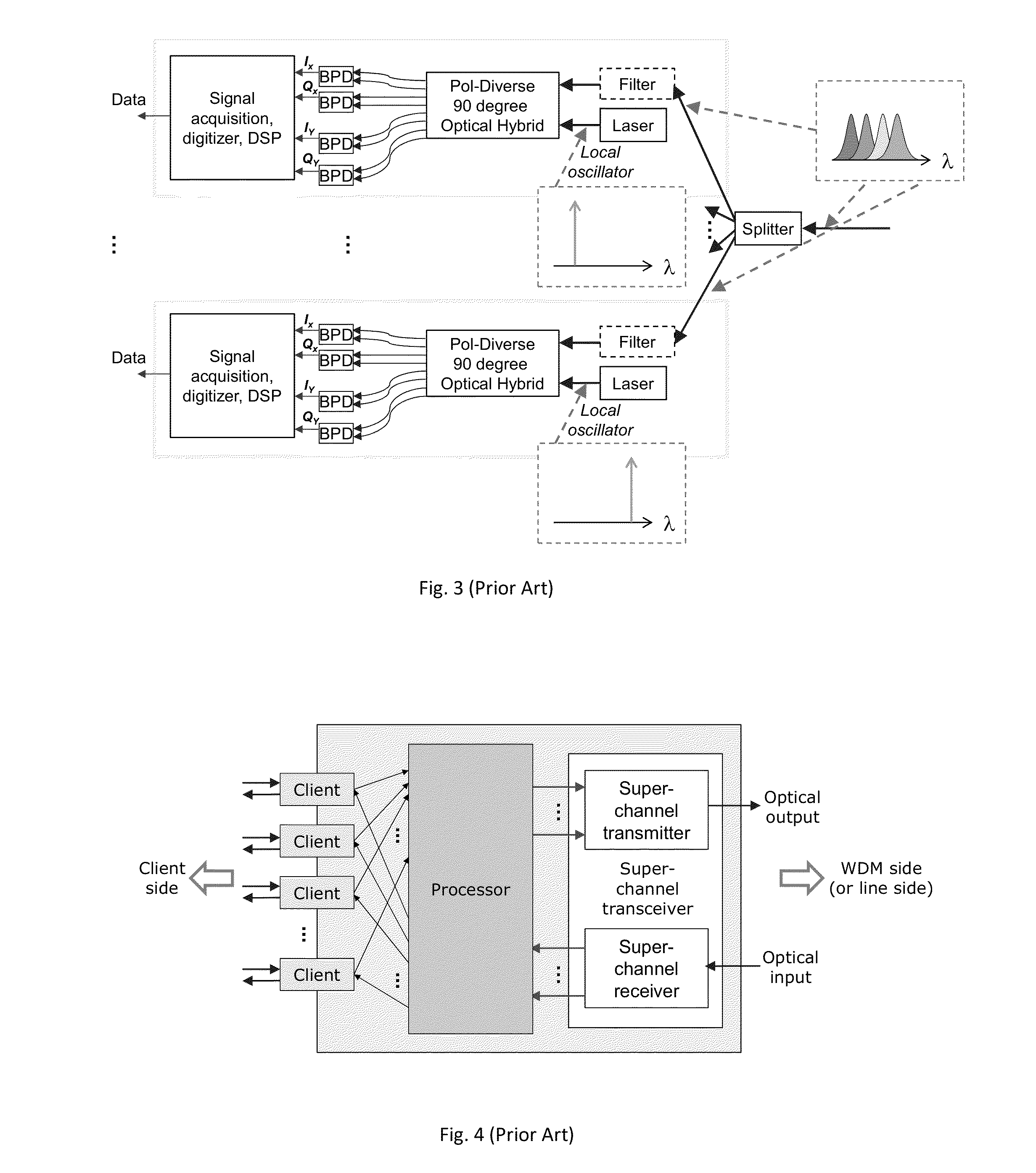Multi-direction variable optical transceiver
a transceiver and variable technology, applied in the field of optical networks, can solve the problems of insufficient use of advanced technologies listed above, insufficient effectiveness of conventional intensity modulation used in 10 gb/s or below systems, and often under-utilized, so as to achieve the effect of flexible network
- Summary
- Abstract
- Description
- Claims
- Application Information
AI Technical Summary
Benefits of technology
Problems solved by technology
Method used
Image
Examples
Embodiment Construction
[0037]The present invention departs from the “norm” that each super-channel transceiver (and thus each WDM transponder) has only one output at the WDM side, instead we design multiple outputs for each transceiver. Different subcarriers can be directed to different outputs to go to different directions in the network. Similarly, this new super-channel transceiver (and thus the WDM transponder) can receive multiple inputs from the WDM side. As a result, the transmission direction can be selected at subcarrier granularity and not the entire super-channel granularity. With the invention, by adding this feature, the unused subcarriers can be utilized for traffic in other directions / destinations, and the switching granularity can be finer, which brings better flexibility in the network.
[0038]FIG. 5 shows the proposed multi-direction variable optical transmitter based on super-channel technology. In this illustration, super-channel transmitter with single light source is used. The front pa...
PUM
 Login to View More
Login to View More Abstract
Description
Claims
Application Information
 Login to View More
Login to View More - R&D
- Intellectual Property
- Life Sciences
- Materials
- Tech Scout
- Unparalleled Data Quality
- Higher Quality Content
- 60% Fewer Hallucinations
Browse by: Latest US Patents, China's latest patents, Technical Efficacy Thesaurus, Application Domain, Technology Topic, Popular Technical Reports.
© 2025 PatSnap. All rights reserved.Legal|Privacy policy|Modern Slavery Act Transparency Statement|Sitemap|About US| Contact US: help@patsnap.com



